Ever noticed how some lawns in your neighborhood stand out? Those neat, clean-cut yards aren’t just nice to look at—they’re actually healthier. Good mowing does more than tidy up your yard; it helps your grass grow strong and stay green.
The good news? You don’t need costly gear to get those perfect stripes and edges. In this blog, you’ll learn simple techniques the pros use that you can apply with your basic mower.
I’ll cover everything from the right height to cut your grass to the best patterns for mowing and quick fixes for common lawn problems.
I’ve spent years learning these methods from lawn care experts, and now I’m sharing them with you. By the end of this post, you’ll have all the know-how to turn your ordinary yard into the best-looking lawn on the block.
Importance of Lawn Mowing
Mowing your lawn is an important part of keeping your yard healthy and looking great. Regular mowing helps your grass grow evenly, encouraging it to develop strong roots. This leads to a fuller, greener lawn.
Mowing also helps prevent weeds from taking over by cutting down their growth before they can spread. It’s also a good way to keep your lawn at a manageable height, which makes it more enjoyable to walk on and play in. When you mow regularly, your lawn gets the right amount of sunlight, air, and water, which helps it thrive.
Additionally, mowing helps improve the overall appearance of your yard, making it neat and tidy. Remember to keep your mower blades sharp and mow when the grass is dry for the best results.
Tools and Materials Required
Before you start mowing like a professional, let’s talk about what you’ll need. You probably have most of these items already.
- A lawn mower (push or riding – either works fine)
- Work gloves
- Safety glasses
- Ear protection (for louder mowers)
- Closed-toe shoes
- Hat and sunscreen
- String trimmer for edges
- A leaf blower or rake for cleanup
- Garden hose or sprinkler for after-mowing watering
Not all tools are created equal, but most will do the job well enough. I’ve found that regular maintenance matters more than having fancy equipment. A simple mower that’s clean and has sharp blades cuts better than an expensive one that’s been neglected.
Want to know a secret? Professional lawn care folks often use the same basic tools you can buy at any hardware store. The difference is how they use them. Keep your tools clean and in good working order. This makes your job easier and your results better.
Step-By-Step: Mow Like a Pro
Ready to get the perfect cut? Follow these six steps to transform your regular mowing routine into professional-level lawn care. These methods are what lawn care experts use every day, broken down into simple actions anyone can follow.
1. Prep the Lawn
Before you start your mower, take a quick walk around your yard. Pick up any sticks, rocks, toys, or other items that could damage your mower or become flying objects. I always check for hidden sprinkler heads, too – hitting one can ruin both your sprinkler and your mower blade.
Make sure your lawn is dry. Wet grass clumps together, creates uneven cuts, and can clog your mower. If you must mow when it’s damp, go slower and clean your mower more often during the job.
Quick tip: Mowing in the mid-morning after dew has dried but before the hot afternoon sun is often ideal.
2. Set the Right Mower Height

The height of your grass after cutting makes a big difference in lawn health. Most home lawns do best when cut to about 2.5-3.5 inches tall. Taller grass grows deeper roots and stands up better to heat and drought.
When adjusting your mower, place it on a flat surface and measure from the ground to the blade. Most mowers have easy height adjustments on the wheels.
Never cut more than one-third of the grass height in a single mowing. For example, if your grass is 4.5 inches tall, don’t cut it shorter than 3 inches.
3. Start with Sharp Blades
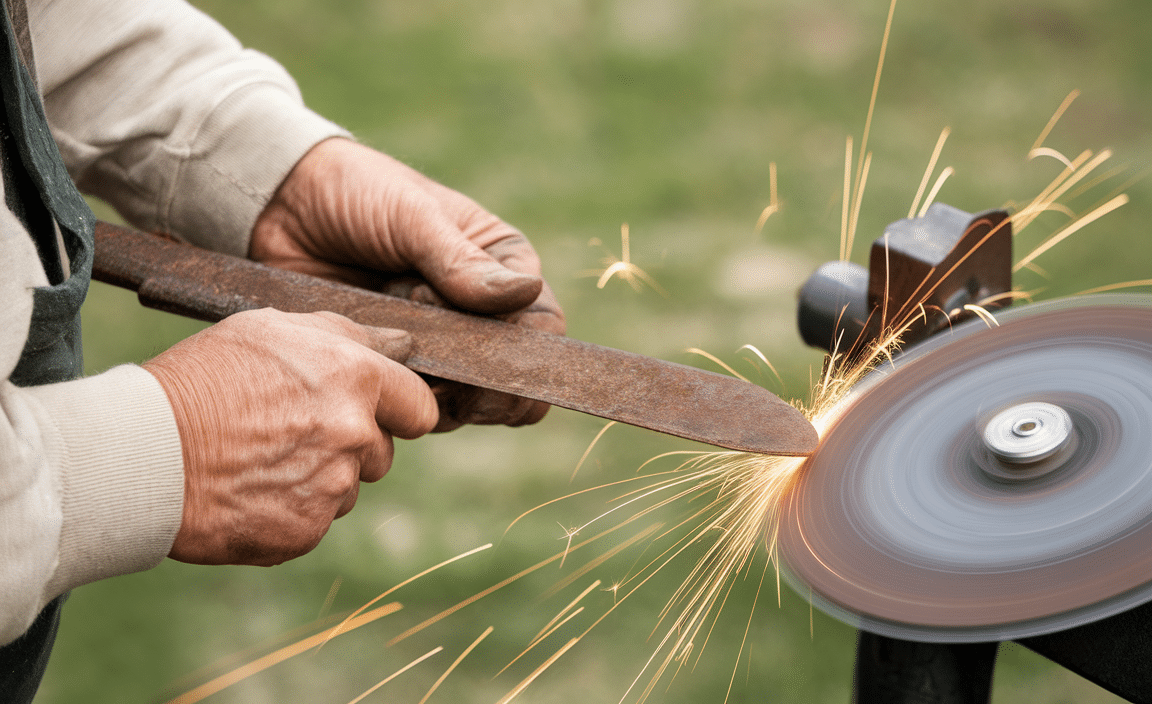
A dull blade tears grass instead of cutting it cleanly. This stresses your lawn and can turn the tips brown. You want a clean cut that heals quickly.
I sharpen my mower blade at least twice per season. You can do this yourself with a file or grinder, or take it to a hardware store that offers this service.
When installing the blade, make sure it’s balanced. An unbalanced blade causes vibration that’s bad for your mower and gives an uneven cut.
4. Mow in A Pattern
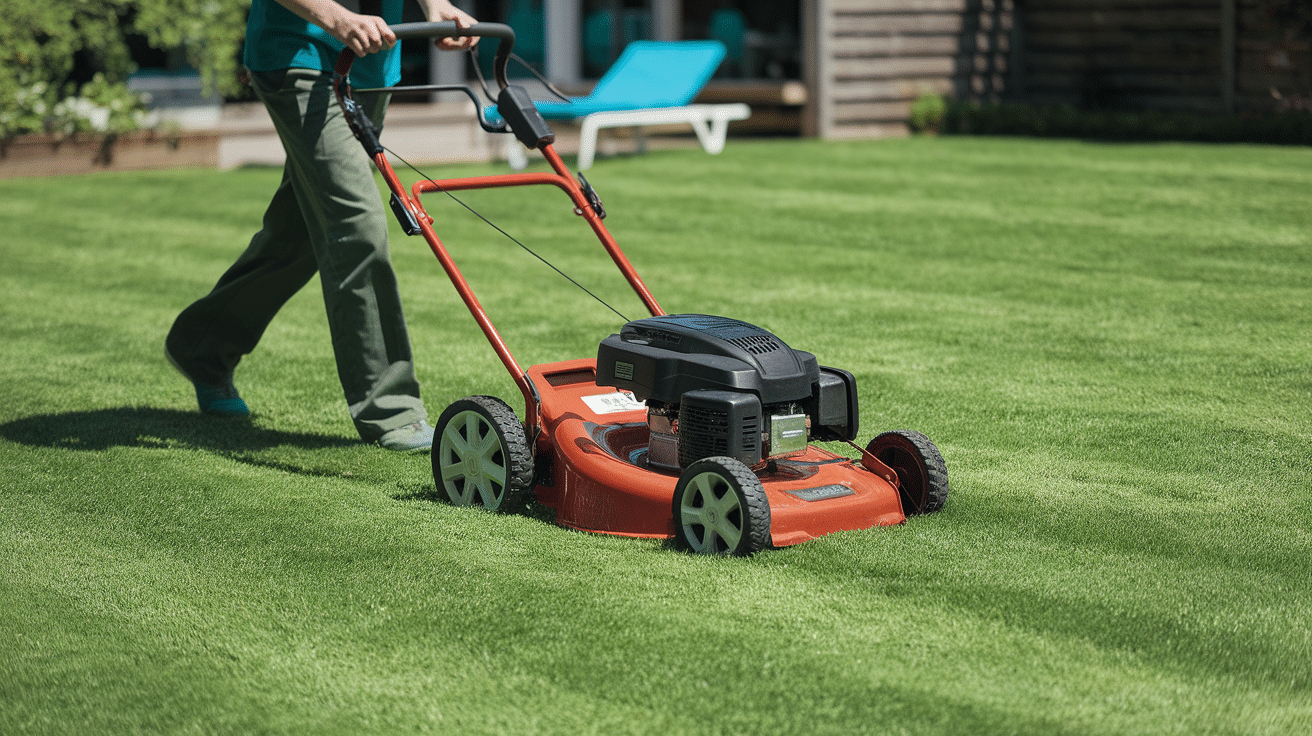
The way you move across your lawn affects both appearance and grass health. Try alternating directions each time you mow. This prevents grass from leaning permanently in one direction and helps it grow more upright.
For the best-looking lawn, try these simple patterns like back and forth in straight lines, concentric circles from outside to inside, and diagonal lines across the yard.
Remember to Overlap each pass by about 2-3 inches to avoid missed strips.
5. Edge for That Clean Finish
The difference between an okay lawn and a great one often comes down to the edges. After mowing the main areas, trim along sidewalks, driveways, and flower beds.
A string trimmer works well for most edging jobs. Hold it so the string spins parallel to the ground for a clean edge along flat surfaces. For a crisp look, use a dedicated lawn edger that cuts vertically into the soil.
Take your time with edges – this is where your neighbors will notice your attention to detail.
6. Clean up Afterwards
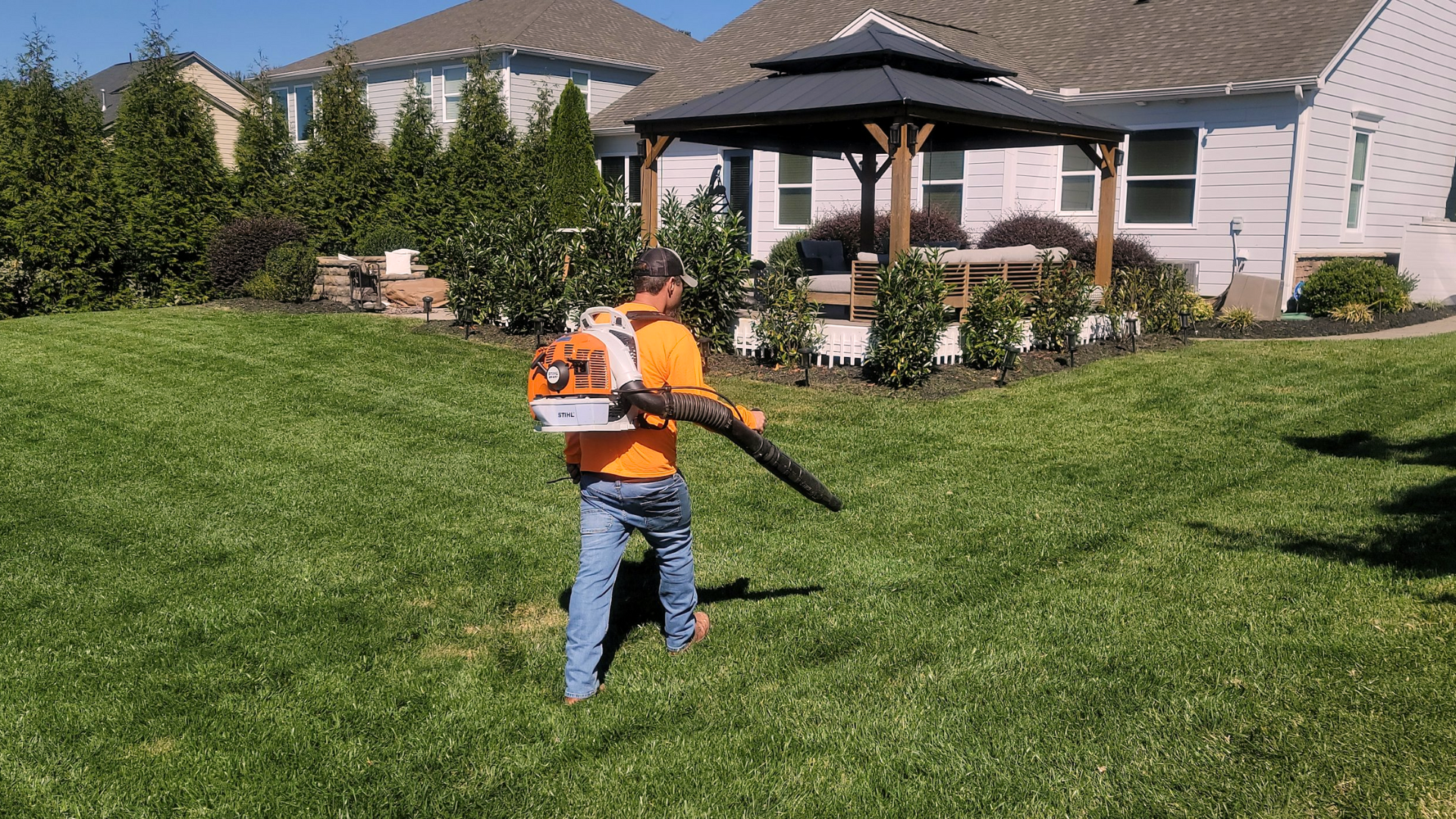
When you finish mowing, take a few minutes to clean up. Blow or rake grass clippings from your walkways and driveway back onto the lawn where they can break down and feed your grass.
Clean your mower before putting it away. Grass buildup under the deck can cause rust and affect cutting performance. Just tip the mower (disconnect the spark plug wire first for safety), and scrape off built-up grass with a putty knife.
Your future self will thank you next time when your mower starts right up and cuts perfectly.
Avoid the Most Common Mowing Mistakes
Want a lawn that stands out for all the right reasons? These four common mistakes can undo all your hard work. I’ve made every one of these errors myself, and fixing them made an immediate difference in how my lawn looks and grows.
1. Mowing in the Wrong Conditions
Cutting grass when it’s too wet or after a heavy rainfall can leave your lawn uneven and cause your mower to clog or slip. Worse, wet grass tears more easily and can invite disease. Wait until the blades are dry to the touch—usually mid-morning is best.
Quick tip: If your shoes get wet walking across the lawn, it’s too early to mow.
2. Using the Same Pattern Every Time
Going over your lawn the exact same way week after week can cause the grass to lean in one direction, and over time, it compacts the soil underneath. This can lead to uneven growth and even thin patches.
Try this instead: Alternate your mowing direction—vertical one week, diagonal the next. It encourages upright growth and improves air circulation at the soil level.
3. Ignoring Lawn Health Between Mows
Mowing is just one part of a healthy lawn. If you’re not keeping up with watering, feeding, and checking for weeds or pests, your mowing efforts won’t go far. A dry or undernourished lawn won’t recover well after trimming.
Action step: Walk your yard once a week and note any bare spots, thinning areas, or weeds creeping in. A little extra attention goes a long way. For homeowners who manage bigger yards or landscapers handling multiple properties, top lawn care business apps can help track watering, fertilization, and maintenance schedules without missing a beat.
Pro Tips for a Lush and Healthy Lawn
Want a green, thick lawn that makes your neighbors stop and stare? I’ve got some simple tips that will help you get there without fancy equipment or complicated methods.
Water Deeply but Less Often
Your grass needs about 1-1.5 inches of water per week. Water less frequently but deeply instead of daily light sprinkles. This helps roots grow deeper into the soil. Morning is the best time to water. This gives your lawn time to dry before evening, which stops fungus and other issues from showing up. I water my lawn just 2-3 times a week, and it stays green even during hot months.
Mow at the Right Height
Don’t cut your grass too short! Set your mower to leave grass at 2.5-3.5 inches tall. Taller grass shades the soil, which means less water evaporates, fewer weeds grow, and stronger, deeper roots form. Switch up your mowing pattern each time. This stops ruts from forming and keeps your grass growing straight up.
Test Your Soil
Get to know what’s in your soil before you add anything to it. You can buy a soil test kit at any garden store for about $20. The test tells you what nutrients your soil has, what nutrients it needs, and the pH level (how acidic or basic it is). Once you have this info, you can add exactly what your lawn needs—nothing more, nothing less.
Feed Your Lawn Properly
Most lawns need to be fed 2-4 times a year. Don’t overdo it with fertilizer. Too much can harm your grass and pollute local water. Fall is actually the best time for the main feeding. The grass stores those nutrients all winter, so it’s ready to grow strong in spring. I use a slow-release fertilizer that feeds my lawn over time instead of all at once.
Deal with Weeds Early
The best way to stop weeds is to grow thick, healthy grass that doesn’t leave room for them! Pull weeds when they first show up and the soil is moist. Get the whole root if you can. For larger weed problems, spot-treat only the areas that need help. You don’t need to spray your whole lawn.
Conclusion
Mowing your lawn well isn’t hard, but it does take care. The tips I’ve shared can help you get that clean, pro look, without hiring anyone. The real secret? Consistency.
Mow often, keep your blades sharp, and don’t skip the little things like edging and cleanup. I’ve found that just 15 extra minutes a week makes a big difference over time.
You don’t have to do it all at once. Start with a tip or two, get good at those, then add more. Your lawn will keep getting better. And the best part? A neat lawn isn’t just nice to look at; it’s healthier, stronger, and easier to manage in the long run


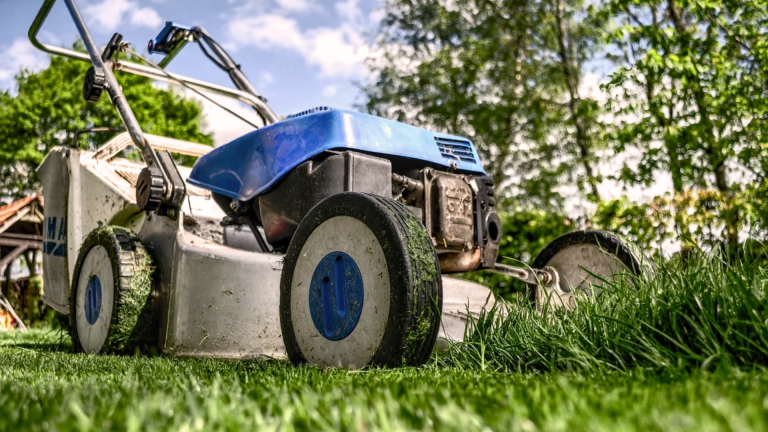

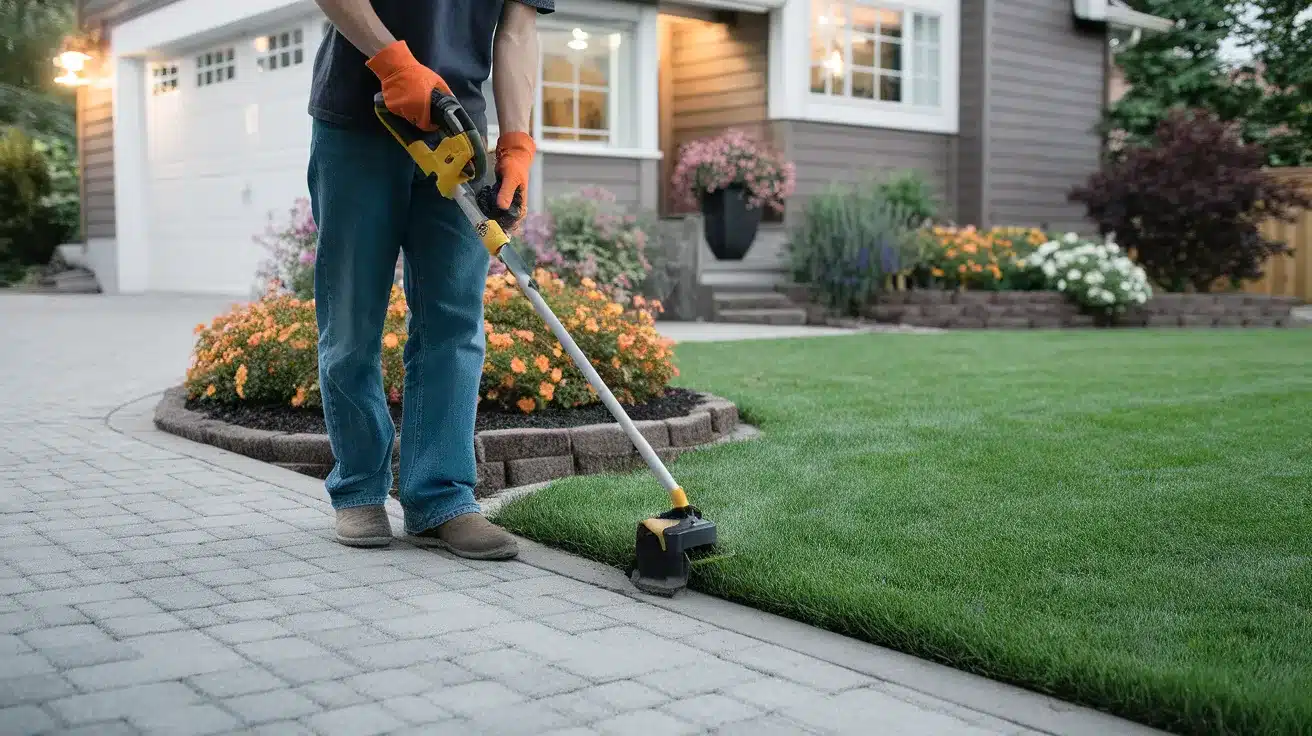











One Response
Excellent article. I learned a lot, it’s now part of my favorites.